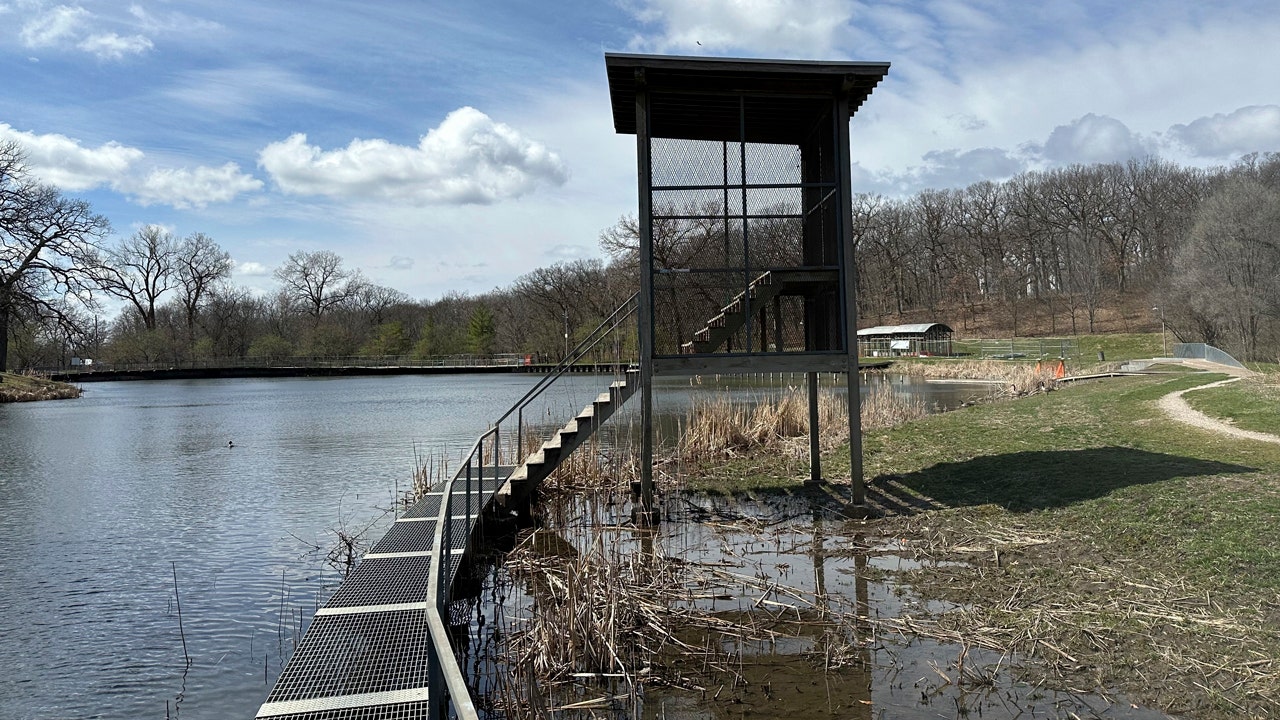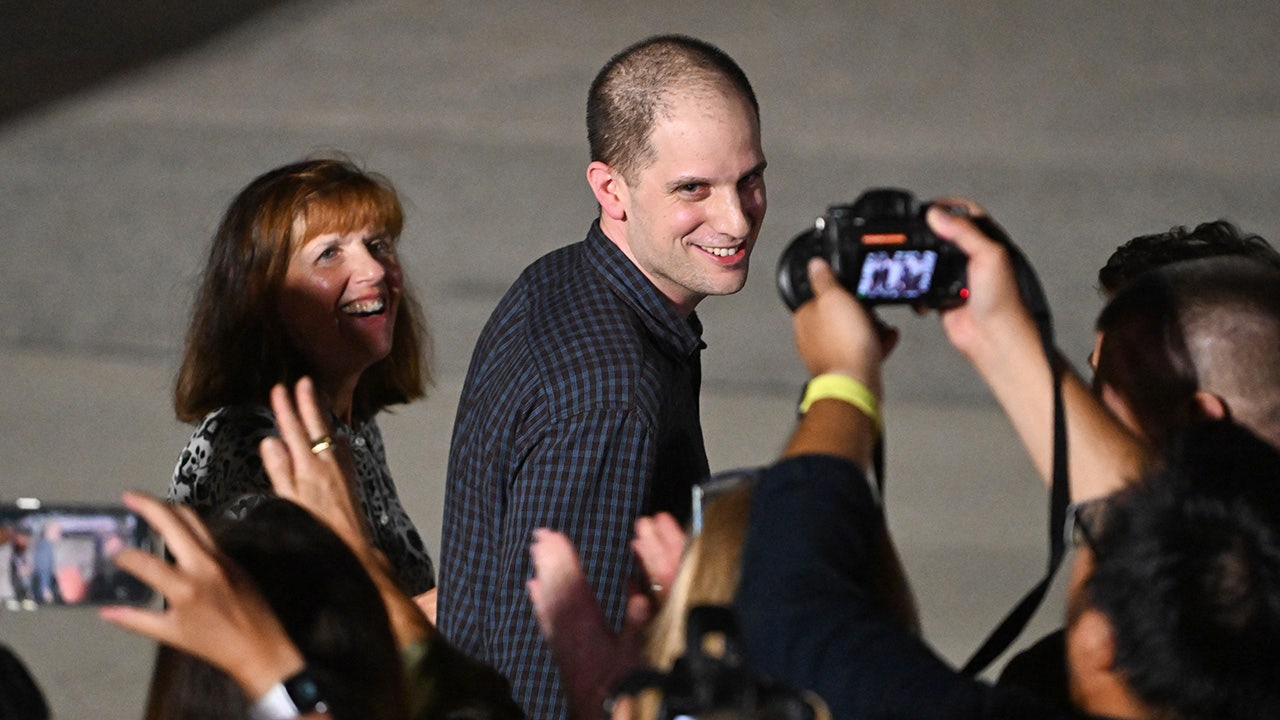Discontent was simmering on Indiana University’s flagship campus long before the first tent went up in Dunn Meadow, the vast green space beside the student union in Bloomington.
Earlier in the academic year, faculty members and graduate students voted no confidence in the university president. The cancellation of a Palestinian artist’s exhibition and the suspension of a pro-Palestinian student organization’s faculty sponsor drew backlash. Some in the Jewish community said they felt increasingly unsafe.
But it was only in the last week, as a national wave of pro-Palestinian encampments reached Indiana, that a year defined by tension erupted into crisis. What came next — the arrests, the dueling accusations of police brutality and hate speech, the blurring of calls for divestment from Israel with those seeking the removal of university leaders — was a one-campus microcosm of how thoroughly the camps had rocked American higher education, and of how uncertain the path forward had become.
“We should put all political problems aside and get rid of this administration that has failed all of us,” said Ahmad Jeddeeni, the president of Indiana’s Graduate and Professional Student Government, who said he had friends on both sides of the protests. “These guys are not able to lead in crisis,” he said of the university’s top leaders. “These guys made the crisis, actually.”
‘Difficult, disturbing and emotional’
All across the country, at colleges private and public, large and small, in conservative states and liberal ones, administrators have struggled to navigate the moral and political thickets presented by Hamas’s Oct. 7 attack on Israel and Israel’s subsequent campaign in Gaza that has claimed tens of thousands of lives.
At Indiana, a highly regarded public university that enrolls more than 40,000 students, tension had been mounting since the fall. By the time pro-Palestinian demonstrators indicated last week that they would set up an encampment, following demonstrations at Columbia University and other colleges, any good will between activists and administrators in Bloomington had already been sapped.
“Over the last several days, our campus community has faced considerable challenges and wrestled with complex questions,” the university’s president, Pamela Whitten, and provost, Rahul Shrivastav, wrote this week in an email to students and employees. “Put simply, the events of recent days have been difficult, disturbing and emotional.”
As protesters prepared last week to set up tents in Dunn Meadow, a designated “assembly ground” on the campus where temporary structures had long been allowed, although not overnight, administrators abruptly changed the policy to bar all temporary structures that did not have prior permission. When protesters went ahead and pitched tents anyway, the Indiana State Police arrived in riot gear, and along with the campus police arrested more than 30 people. Images of a police sniper observing from a nearby roof alarmed many on campus.
Two days later, with the protest continuing, police officers and state troopers returned to the meadow and made more arrests. Heather Akou, an associate professor of fashion design, said she was arrested on Saturday, charged with a misdemeanor and issued a one-year ban from campus. She denies wrongdoing and said she had appealed her campus ban to Dr. Whitten.
“I don’t see why I should be asking her for permission to be on campus,” said Dr. Akou, who for now is working remotely. “She should apologize to me and invite me back.”
Protesters described the encampment as peaceful and accused the police of escalating tensions and using unnecessary force when making arrests. The superintendent of the State Police, Doug Carter, asserted in local news interviews that protesters were using hate speech and refusing to follow university rules and police instructions. Mr. Carter declined through a spokesman to be interviewed for this article.
By Saturday night, the two raids on the camp had resulted in 57 arrests, including 37 students, four faculty members and two staff members. Yet the protests continued.
‘It is scary here’
It had already been a long academic year in Bloomington, a left-leaning college town in a solidly conservative state, a city with the typical Big Ten milieu of bars and independent coffee shops.
The university has become much more diverse in recent years, describing about 30 percent of its undergraduates from the United States as students of color in 2023, up from 11 percent in 2005. About 5 percent of undergraduates are from other countries, and just over half of last year’s freshman class was from Indiana.
Over the last year, many faculty members had come to view Dr. Whitten, who took office in 2021, as insufficiently supportive of academic freedom and shared governance. At the same time, the university was facing pressure from Indiana’s Republican-led government over intellectual diversity, faculty tenure and funding for a sexuality research institute.
In November, after some students raised concerns about antisemitism on campus, a Republican congressman from the state, Jim Banks, sent a letter to Dr. Whitten warning that the university could lose federal funding if it was found to condone or tolerate antisemitism.
Then in December, a political science professor, Abdulkader Sinno, was suspended from teaching after administrators claimed he had provided false information when he tried to reserve space on campus for a speech by an Israeli peace activist, organized by the Palestine Solidarity Committee, a student group that Dr. Sinno advised. Dr. Sinno said the discipline was unjust. University officials declined to discuss the matter in detail.
Around that same time, a university art museum canceled what would have been the first American retrospective of Samia Halaby, regarded as one of the most important living Palestinian artists. Ms. Halaby, who earned a degree from Indiana, said at the time that it was “clearly my freedom of expression that is under question here.”
All the while, some Jewish students said they had felt an alarming shift in the campus atmosphere.
“It is scary here, and this is the first year I have felt like that here,” said Amalya Sykes, a marketing student who is from Jerusalem.
Still, it seemed even a couple of weeks ago as if the semester might wind down quietly. Commencement was coming, and many students would be moving out for the summer break.
‘We have lost trust’
Early this week, dozens of protesters remained in Dunn Meadow, still fuming over the police raids as they chanted, “Palestine will be free, from the river to the sea,” a contested phrase that many supporters of Israel consider antisemitic but many Palestinians see as a call for freedom.
“Everything we are doing is aimed at ending the genocide in Gaza,” said Aidan Khamis, a sophomore who said he was arrested on Saturday and barred from campus for a year. Protest organizers said the demonstration was not antisemitic.
But across the street from the protest at Chabad House, a Jewish student center, Rabbi Levi Cunin called for the university to end the demonstrations immediately. Chabad House has been blaring music, he said, to drown out protest chants that Jewish students found offensive.
“What violence has to happen for them to shut it down?” said Rabbi Cunin, who described some of the protesters’ rhetoric as hostile. “They need to shut it down now.”
It was not clear when or if the police would be back. After the second round of arrests, Dr. Shrivastav met with student government and faculty leaders and later seemed to indicate in a letter to campus that administrators might be open to temporarily allowing structures at the encampment, though no agreement had been reached.
All the while, more people on campus, including those not involved with the pro-Palestinian demonstrations, began calling for the removal of top administrators, in forums including a rally on Monday.
In an open letter, Colin R. Johnson, the president of the faculty, said “that there is no viable way forward other than for President Whitten to resign from office or be removed.” Laurie Frederickson, a student who is president of the Indiana Memorial Union Board and who attended the weekend meeting with Dr. Shrivastav, said, “I don’t know that I can have my confidence in this administration rebuilt.”
“Quite frankly, I think it would take a tremendous change from the administration that I don’t think has ever been seen in higher education to rebuild trust,” Ms. Frederickson said.
Dr. Whitten and Dr. Shrivastav have given no indication they plan to leave, and both declined repeated interview requests made through a university spokesman. In a campuswide email, the two administrators said that encampments “tax limited public safety resources and become magnets for those making threats of violence.” They also said “our commitment to free speech is — and must continue to be — unwavering.”
Mr. Carter, the State Police superintendent, praised Dr. Whitten’s leadership in an interview with a local news outlet. Gov. Eric Holcomb, a Republican, defended the State Police response while speaking to local reporters on Friday, before the second raid.
“We can peacefully protest, and you can express your emotionally charged opinion, but you’re not going to infringe on other people’s rights,” Mr. Holcomb said on Friday, according to local reports. “And you’re not going to deter people from getting a good education.”
“
Commencement is this weekend. And even as the protests persisted in recent days, most students were going about their usual end-of-year business, studying for finals or trying on their caps and gowns.
But whether the protests end with the academic year remains an open question. Malaika Khan, a senior, said she planned to stay in Bloomington and lead demonstrations until the university met protesters’ divestment demands. “Having fun this summer,” she said, “isn’t a priority.”






